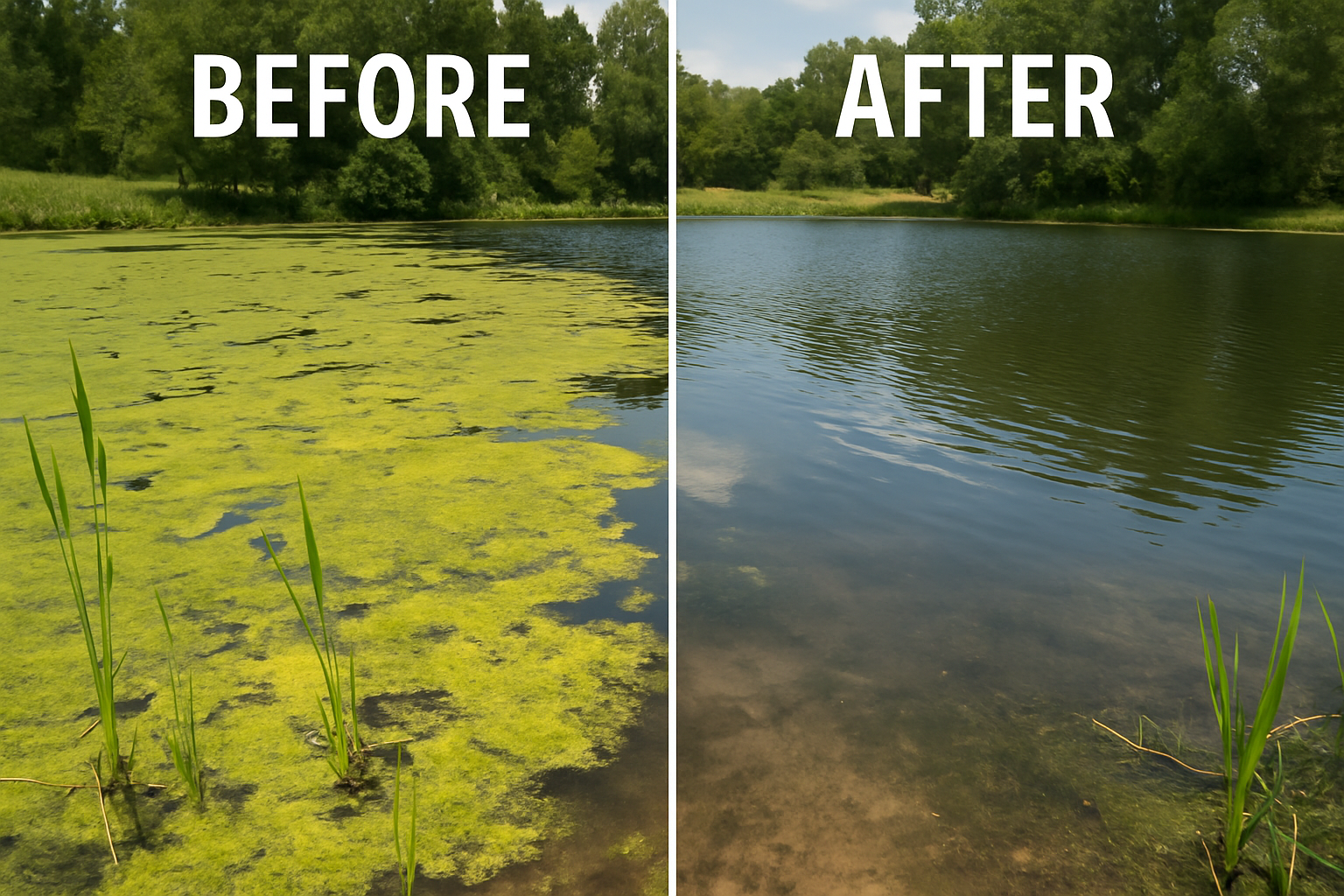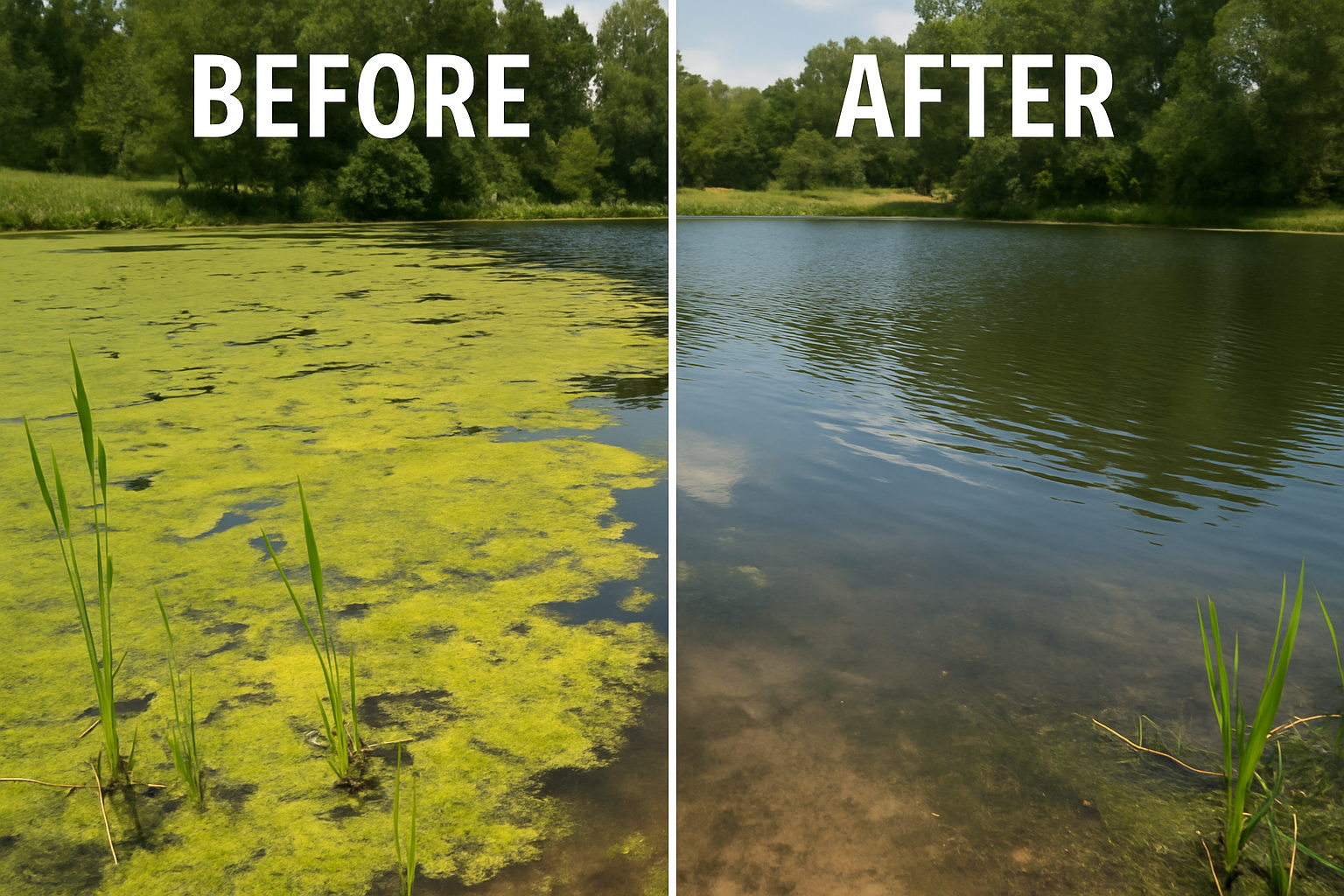Phosphate Lock - Natural Water Clarity for Ponds | 45 lbs
Phosphate Lock - Natural Water Clarity for Ponds | 45 lbs
Couldn't load pickup availability
Why You'll Love It
Specifications
Specifications
Description
Description
Stop algae at its source by eliminating excess phosphates-nature’s nutrient for unwanted algae blooms. OWS Lake and Pond Phosphate Lock binds and removes these phosphates, clearing cloudy, murky water quickly and effectively. High levels of phosphates can cause toxic algae blooms, rampant weed growth and overall poor water quality, which causes major disruptions to an aquatic ecosystem.
Phosphate Lock works by binding reactive phosphorus at the molecular level and removing it from the water column. This removal helps to improve water quality in ponds and lakes. Phosphate Lock will also buffer pH, provide approximately 70 beneficial trace minerals, provide minor flocculation (settling) of mud and clay particles, and aid in reducing ammonia.
This treatment tackles the root cause, delivering longer-lasting clarity and healthier aquatic ecosystems. Safe for fish, aquatic plants, pets, and the environment, it fits seamlessly into your maintenance routine without hassle or risk. Designed for pond owners and professionals who demand performance without compromise-just clear, beautiful water that elevates your property and peace of mind.






